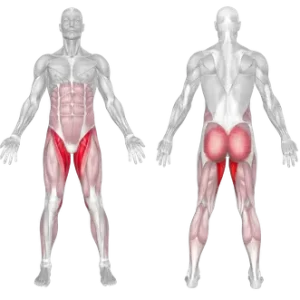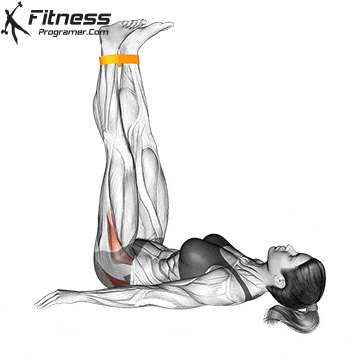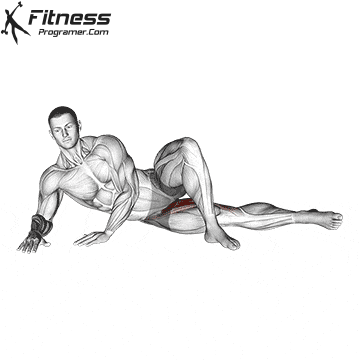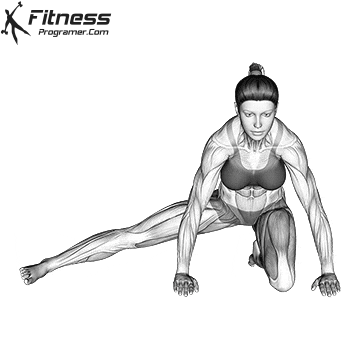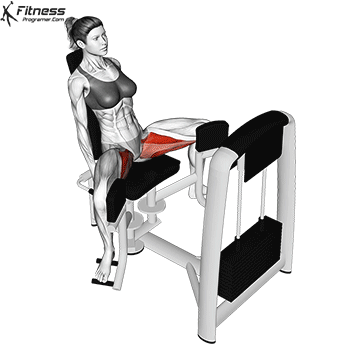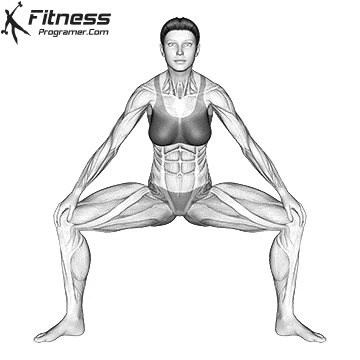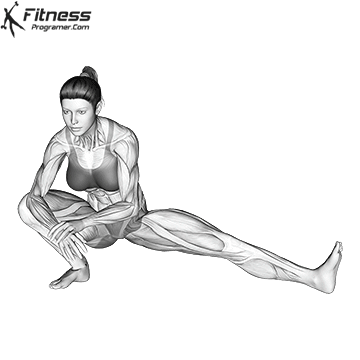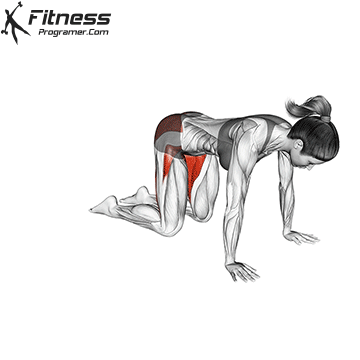Thigh Fly Overview
The Thigh Fly, also known as the Adductor Magnus Stretch or Inner Thigh Stretch, is a versatile exercise that enhances flexibility, mobility, and strength in the inner thigh area. This exercise involves lying on your back, lifting your legs towards the ceiling, and then opening and closing them in a controlled manner to engage the inner thigh muscles.
The Thigh Fly can be performed as either a static stretch, where you hold the position for a certain period, or as a dynamic movement, where you continuously open and close your legs. Both variations offer unique benefits. By incorporating the Thigh Fly into your fitness routine, you can improve flexibility, strength, and mobility while supporting overall lower body function and stability.
How to Perform the Thigh Fly
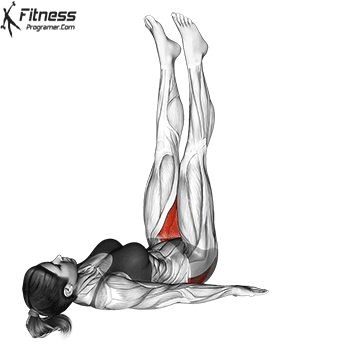
The Thigh Fly as a static stretch:
- Starting Position: Lie on your back with your legs together, lifted towards the ceiling. Ensure your hips are firmly anchored to the floor.
- Stretching Movement: Slowly open your legs to the sides as far as comfortable, feeling a stretch along your inner thighs. Hold this position for 10-15 seconds while breathing steadily.
- Return to Starting Position: Gently close your legs back together, returning to the starting position.
- Repetitions: Repeat the stretch for 2-4 repetitions, taking brief rest periods in between if needed.
The Thigh Fly as a dynamic movement:
- Starting Position: Begin in the same starting position as the static stretch.
- Continuous Movement: Open your legs to the sides and then close them back together in a fluid motion without pausing at the stretched position.
- Repetitions: Perform the dynamic Thigh Fly for the specified number of repetitions without resting between each repetition.
- Breathing: Inhale as you open your legs and exhale as you close them.
As always, listen to your body and adjust the intensity and duration of the exercise based on your fitness level and comfort.
Tips for Proper Form
- Keep your hips anchored to the floor throughout the movement.
- Move slowly and with control to maximize the stretch and engage the muscles effectively.
- Breathe deeply and steadily throughout the exercise.
- If you feel discomfort or strain, reduce the range of motion or stop the exercise.
Common Mistakes to Avoid
- Arching the Lower Back: Ensure your back stays flat on the ground to prevent strain.
- Using Momentum: Perform the movement with control rather than relying on momentum.
- Overextending: Avoid pushing your legs too far apart, as this may cause muscle strain.
- Holding Your Breath: Maintain steady breathing to enhance relaxation and effectiveness.
Benefits of the Thigh Fly
1. Enhanced Flexibility
The Thigh Fly helps stretch and lengthen the inner thigh muscles, increasing range of motion and reducing muscle tightness. Improved flexibility can also contribute to better posture and movement efficiency.
2. Improved Mobility
By increasing flexibility and strengthening the inner thighs, the Thigh Fly makes movements like walking, running, and squatting easier and more comfortable. Enhanced mobility can also help reduce the risk of injury by promoting better joint function.
3. Increased Strength
This exercise engages and strengthens the inner thigh muscles, which provide stability and support to the hips and pelvis. Stronger inner thighs contribute to better balance and coordination, which are essential for both daily activities and athletic performance.
4. Core Activation
The Thigh Fly requires core stability to maintain proper form, which helps strengthen the abdominal muscles, lower back, and pelvis. A strong core supports better posture and overall body alignment.
5. Enhanced Lower Body Function
Stronger and more flexible inner thighs improve overall lower body function, which can enhance athletic performance, increase agility, and reduce the risk of falls, particularly in older adults.
6. Rehabilitation & Injury Prevention
The controlled stretching and strengthening involved in the Thigh Fly can be beneficial for individuals recovering from hip, thigh, or groin injuries. This exercise can help promote healing, restore range of motion, and improve overall lower-body stability.
How to Incorporate the Thigh Fly Into Your Routine
- Warm-Up or Cool-Down: Use the static stretch variation before or after workouts to improve flexibility.
- Leg Day Workouts: Include the dynamic Thigh Fly to enhance inner thigh strength and stability.
- Core Workouts: Engage the core while performing the movement to improve balance and abdominal strength.
- Rehabilitation Programs: Utilize this exercise for recovering from groin, hip, or thigh injuries with a physical therapist’s guidance.
Thigh Fly Muscles Worked
